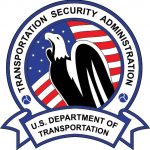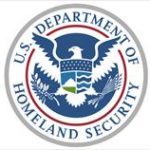A shooting aboard a Greyhound bus traveling between Los Angeles and San Francisco shows how passenger and operator security for ground transportation is more vulnerable when compared to air travel, The Associated Press reported.
One passenger lost her life and five other people were wounded, two critically, in the shooting that happened as the bus was moving on Interstate 5 near the small mountain community of Lebec, Calif., early Monday, Feb. 3. The suspect, a Maryland man, was restrained by passengers and arrested by authorities.
“Anyone determined to carry out an attack on ground transportation faces few, if any, security checks,” the AP report stated.
The report mentions that more than 30 million people in the U.S. use ground transportation daily while 3 million fly. But spending on security for ground transportation such as passenger trains, subways, light rail and buses is dwarfed by spending on air transportation security. An estimate from a former U.S. representative mentioned that after the Sept. 11, 2001, terrorist attacks that security for buses, trains, subways and ferries combined was outspent by air security by more than $20 billion.
Los Angeles County Metropolitan Transit Agency in conjunction with the Transportation Security Administration (TSA) is enacting security devices that scan for weapons and explosives, the first in the nation to do so, AP reported.
But duplicating the level of security that exists at the nation’s airports would be a difficult task for ground transportation providers nationwide, AP stated.
“As it is now, drivers and passengers are the de facto, frontline security when violence breaks out on buses,” the report stated.
Read the entire article from The Associated Press.
Tag: TSA
NJ.com reports that despite legislation requiring strengthened security procedures for railroads having passed a decade ago, the Transportation Security Administration (TSA) has yet to put any new security measures in place.
Both the House Homeland Security Committee and the Department of Homeland Security have found that railroads in the U.S. are especially vulnerable to attack. What’s more, al Qaida recently published information on how to attack trains in the U.S. and Europe.
Click here to read more from NJ.com.
SMART TD and BLET submitted joint comments to the Transportation Security Administration (TSA), Thursday, March 16, on their proposal to require security training for employees of higher-risk freight railroad carriers, transportation agencies, passenger railroad carriers and over-the-road bus companies.
TSA’s proposed rule will require companies to train employees performing security-sensitive functions on how to observe, assess and respond to terrorist-related threats or incidents.
SMART TD and BLET said in their comments:
“We support stronger security training requirements for surface transportation employees who serve a critical role in the movement of passengers and commercial goods nationwide. Train operators in particular are responsible for the movement of hazardous materials, which can be a high-risk target for terrorist attacks.
“In 2014, the Federal Railroad Administration (FRA) published a final rule which established minimum training standards for all safety-related railroad employees, as required by the Rail Safety Improvement Act of 2008. We urge TSA to engage with the FRA to implement improvements to those training standards and make sure that both sets of standards don’t conflict with one another.”
Click here to read TSA’s proposed rule.
Click here to read SMART TD and BLET’s joint comments in their entirety.
Click here to read all comments submitted to the TSA on this proposed rule.
The Hill.com reported that just days after a backpack filled with explosives was found near a New Jersey train station, Senator John Thune (R-S.D.), chairman of the Senate Commerce, Science and Transportation Committee, and Bill Nelson (D-Fla.), its ranking member, submitted a bill that would mandate the Transportation Security Administration (TSA) to allocate funds to secure and protect rail and transit transportation hubs. Read the complete article here.

The airline was originally set to begin flights April 1, but was delayed due to the lack of Transportation Security Administration (TSA) security screening at the Salina airport.
TSA announced at the end of April that they would restore screening service at the airport, but did not say when. Interested parties can begin booking their flights to or from Salina, Kan. now via the Great Lakes Airlines website.
Read more from the Salina Journal.


This Act is significant because the TSA currently has the right to refuse service to smaller active airports. A key example is Great Lakes Airlines; the airline has has been unable to begin service at the Salina, Kan. airport (originally set to begin April 1) because TSA has refused to supply security at the airport.
Read more from Aviation Pros.
Senators urge TSA to immediately complete measures required in 2007 legislation.
“Tens of millions of riders use our country’s public transportation and passenger rail systems every day, and these networks serve as the backbone of economic activity throughout the country…While aviation security is a vital focus of the TSA, your agency also has a critical role to play in protecting rail and transit passengers.”

In 2007, Congress passed the Implementing Recommendations of the 9/11 Commission, measures the 9/11 Commission urged Congress to adopt to ensure greater security on all of America’s transit systems. The legislation required TSA to create a regulatory framework that addresses the threats facing our passenger rail and transit agencies by having security plans in place, ensuring proper security training for employees, and requiring thorough vetting for those working on the systems.
“Tens of millions of riders use our country’s public transportation and passenger rail systems every day, and these networks serve as the backbone of economic activity throughout the country,” the senators wrote. “Our rail and transit networks carry significantly more people per day than our airlines do. Penn Station in New York City, for example, handles half a million passengers each day – making it busier than all three New York City regional airports combined, and the busiest transportation hub in our country. While aviation security is a vital focus of the TSA, your agency also has a critical role to play in protecting rail and transit passengers.”
“Action on many Congressional mandates has languished for far too long…The legislation was enacted in August 2007 and these items were all due within one year of that date. As of August 2015 – over seven years since the last deadline – we still do not have final action on these requirements. These are urgent priorities and completion of these mandates will further prepare us for emerging threats on the horizon.”
“Last week, three Americans traveling in Europe heroically subdued an armed terrorist attempting to attack and kill passengers on a Paris-bound train. The swift action of these men averted a catastrophe that could have claimed many lives. This close call requires that we consider the vulnerabilities this incident – and several other high-profile attacks on rail and transit elsewhere globally – expose for our rail and transit passengers. This is why we ask for action on long overdue requirements placed on the Transportation Security Administration (TSA) by Congress.”

The recommendations are the result of a comprehensive review conducted over the course of three months. In January 2015, Johnson asked the ASAC to determine if additional risk-based security measures, resource reallocations, new investments or policy changes are necessary to address the potential insider threat vulnerability at U.S. airports.
As noted in the report, “the recommendations were developed within the context of Risk-Based Security (RBS), a holistic approach to aviation security endorsed throughout every level of the Department of Homeland Security (DHS).”
RBS has proven to be a significantly better system than a one-size-fits-all system because it enables better allocation of resources and it focuses on identifying those with intentions to harm persons and/or property.
“I am deeply grateful to the Aviation Security Advisory Committee for their work developing these recommendations,” said Peter Neffenger, TSA Administrator. “They are instrumental in mitigating the potential insider threat vulnerability at our airports.”
ASAC provided their recommendations to TSA April 8. TSA took five immediate steps in response to the ASAC’s report:
- Requiring increased frequency of criminal history records checks.
- Requiring all airport and airline employees traveling as passengers to be screened by TSA prior to travel.
- Requiring airports to reduce the number of access points to an operational minimum.
- Subjecting airport employees to additional randomized screening throughout the workday.
- Advancing a culture of situational awareness for all airport employees through a promotional campaign, “This is My Airport.”
In addition, TSA is beginning a phased implementation approach for FBI Rap Back with an aviation pilot using Dallas-Fort Worth International Airport, Boston Logan International Airport, and Delta Air Lines. The program will enable real time criminal history monitoring of the aviation worker population. Rap Back is part of the FBI’s Next Generation Identification Program, introduced in September 2014.
TSA fully concurs with 26 and partially concurs with two of the recommendations. Statutory limitations in one instance, and the need to conduct a detailed cost-benefit analysis locally in another, are the reasons for the partial concurrence of two recommendations.
The agency is acting on all 28 of the ASAC recommendations and has set a definitive schedule for assessing and reporting the results on actions taken based on the recommendations.
Four of the recommendations are closed:
- TSA has shifted resources to increase random screening of aviation workers.
- TSA, in collaboration with industry, has identified biometric standards for access control.
- TSA has identified its enforcement authority for instances of non-compliance with airport badge accountability requirements.
- TSA has initiated a security awareness campaign (“This is My Airport”) that offers an anonymous 24/7 tip line for employees at airports nationwide.
The other 24 recommendations are open and are the subject of ongoing activity by TSA with identified milestones.
TSA’s actions resulting from the study and implementation of the ASAC recommendations are intended to reduce opportunities to participate in misconduct for the few aviation workers who intend to do so. The actions will increase TSA’s ability to ensure that access to secure areas is only granted to those who should have it and is denied to those who shouldn’t. Finally, they will increase every aviation worker’s expectation that all workers will be subject to screening at some unexpected point during the workday.
TSA is working with ASAC to:
- Increase and improve communication and coordination among agencies and industry partners.
- Gain faster and ongoing access to the right information.
- Share the right information and intelligence with the right partners on technical platforms that those partners can use.
- Train partners to maximize the use of the information while protecting civil rights.
- Continue to reduce access points into secure areas to the minimum.
- Increase random checks at access points and throughout the workplace.
- Use technology to channel employees to unpredictable checks.
- Use technology to enforce adherence to the standards.
- Use information and training tools to ensure everyone understands the rules and their enforcement.
- Provide tools to report suspicious behavior.
- Encourage, reward and publicize employee security awareness and engagement publicizing the report.
TSA will continue to work with the ASAC to strengthen the overall security of our commercial aviation network and mitigate the potential insider-threat posed by aviation workers.
The agency will provide the ASAC with regular updates on progress associated with all open recommendations until each is closed.

Neffenger
WASHINGTON, D.C. — Department of Homeland Security Secretary Jeh Johnson welcomed Peter Neffenger Monday, July 6, as the sixth administrator of the Transportation Security Administration in a ceremony held at TSA headquarters in Arlington, Virginia.
Neffenger was confirmed by the U.S. Senate June 22, 2015, following his nomination by President Barack Obama. He now leads a workforce of approximately 60,000 employees, the security operations at nearly 450 airports throughout the United States, the Federal Air Marshal Service, and shared security for highways, railroads, ports, mass transit systems and pipelines.
“TSA’s mission is critical to the safety and security of our nation. I am deeply honored to continue serving our country, particularly alongside the dedicated men and women of TSA,” said Neffenger. “I look forward to applying my years of leadership experience, law enforcement background and security skills to protecting our nation’s transportation systems.”
Neffenger recently retired from the U.S. Coast Guard, where he held many operational, staff and leadership positions during his 34-year career. Before joining TSA, he served as the 29th Vice Commandant, a position held since May 2014. Prior to this post, Neffenger served as the Coast Guard’s Deputy Commandant for Operations, where he directed strategy, policy, resources, and doctrine for the employment of Coast Guard forces globally. He is a recognized expert in crisis management, port security, and oversight of the commercial maritime industry. He most notably served as the Deputy National Incident Commander for the 2010 BP Deepwater Horizon oil spill, the largest and most complex in U.S. history.
Neffenger officially took the oath of office as administrator on July 4, 2015.